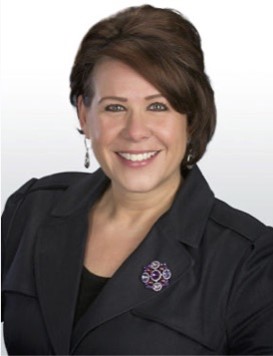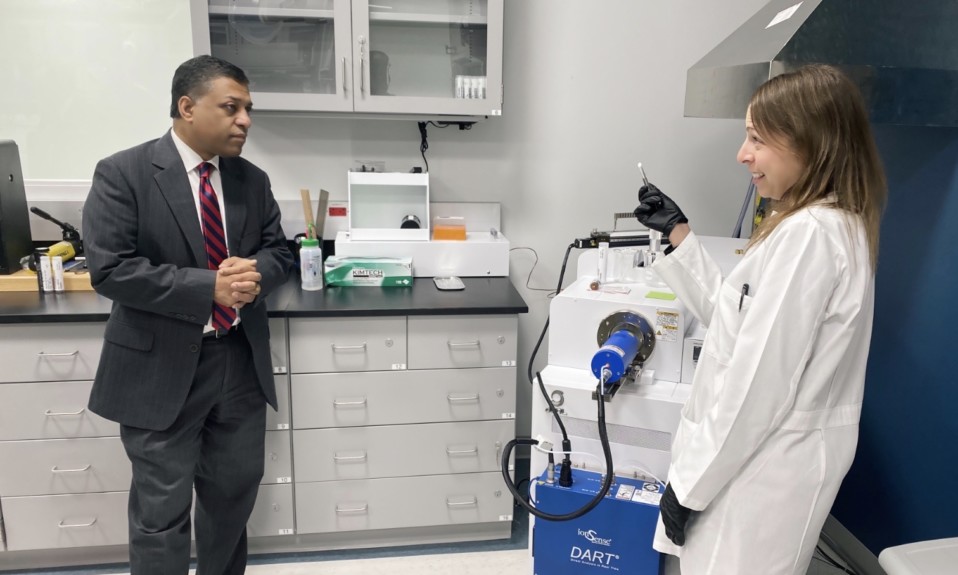Through the Don’t Quit the Quit program, Maridee Shogren is providing valuable services to prenatal and postpartum North Dakota women with SUD
By Jenny Diedrich
The opioid epidemic has disproportionately affected women of reproductive age in rural areas, and a North Dakota program is working to decrease the gap by focusing on empowering females with opioid use disorder (OUD) who are pregnant, postpartum or breastfeeding to maintain their recoveries.

Two years ago, the University of North Dakota created Don’t Quit the Quit to improve access to perinatal and postpartum recovery services for rural women. The program, along with the North Dakota Special Supplemental Nutrition Program for Women, Infants, and Children (WIC) agencies, received the Governor’s Phoenix Award last fall for its work in reducing stigma for pregnant and parenting people with OUD.
“The whole intent behind the [program’s] title was to put resources in place to encourage mothers in recovery to ‘not quit’ their recovery process,” says Maridee Shogren, DNP, MSN, principal investigator for Don’t Quit the Quit. Shogren is a clinical professor at the University of North Dakota, certified nurse-midwife and certified lactation counselor.
Funded by a grant from the nonprofit Foundation for Opioid Response Efforts (FORE), Don’t Quit the Quit started in an eight-county area of rural North Dakota and has expanded to 12 counties. The grant period ends in July, but the program has collaborated with other organizations to expand its outreach and make resources available long-term.
TreatmentMagazine.com recently talked with Shogren about the program’s goals and successes, and why rural areas particularly are affected by barriers to obstetrics care and substance use disorder (SUD) treatment.
Q. What are the goals of Don’t Quit the Quit?
A. The grant was created with three goals that all work together. The first was access. One of our aims was to increase the number of healthcare providers in rural North Dakota that could become waivered to prescribe buprenorphine for OUD for pregnant and parenting persons. In our rural areas of North Dakota, we often have family practice providers who don’t have obstetric experience or obstetric providers who don’t have experience treating SUD. We were really looking at those primary care providers who wanted to increase their expertise and include this type of service.
The second aim was focused on education. We understood that we couldn’t change the stigma that surrounds people with SUD unless we worked with communities to change their knowledge. Throughout the course of the grant, we offered monthly, free education webinars via Zoom. If we had a mom who had OUD and wanted to learn more about substance use and addiction, the webinars were appropriate for her. They were appropriate for families, friends, healthcare providers—anybody who wanted more information. To date, 18 free monthly webinars have been held. All of our webinars have been recorded so people can still use the educational curriculum.
Then we focused on education for our WIC agencies. We worked with them to increase their foundational knowledge of SUDs as well as information on stigma. We also educated the providers in our program who wanted more information about SUDs as well as medication-assisted treatment.
The third part of the grant was focused on different ways to grow community support for families impacted by SUD. We offered to support training for people who wanted to become postpartum doulas. They attended training and then stayed engaged with us to learn more about SUD and its impact. They will continue to reside in their home communities to become experts who can support families.
Q. Why are rural areas disproportionately affected by barriers to care?
A. Rural, urban or wherever, stigma is still hands-down the number one barrier to care. Each rural community has its own culture. Sometimes the topic of SUD is kept very quiet, and we don’t always have the services in every rural community to provide treatment. Stigma often prohibits people from seeking care, but they also have no place to go.
When we’re talking about rural areas in North Dakota, you could have someone who is pregnant and has to drive two hours for obstetric care or treatment for SUD. If you look at the scope of the state, we used to have 19 hospitals available where women could safely deliver their babies. That is now down to 11. Then you throw in the dilemma of not having providers who have experience both in obstetrics care and SUD treatment. It’s all of these layers together that enhance this disproportionality.
“We want to put community resources in place and make sure we have accessibility to treatment so we can support [women’s] recoveries.”
—Maridee Shogren
The goal was to start enhancing the resources that were available by looking at providers who work in family practice. Then we’re cutting down the geographical distance and increasing accessibility. You don’t just become accessible by geography. We provide access to our webinars to gain an understanding of treatment options that are available. For example, many pregnant people didn’t realize that they could safely engage in SUD treatment during pregnancy or while they were breastfeeding.
Q. Can pregnancy and the postpartum period be a trigger for relapse?
A. Yes, there are two concerns. If a person has entered into recovery during pregnancy and is engaged in treatment, we have a deficit in care that happens in general in the postpartum period. The postpartum period needs to be recognized as one full year after delivery. People associate the postpartum period as a six- to eight-week window, and that is wrong. During the course of that year, only about 40% of women will engage in even one postpartum visit. Now we have a long period of time where we don’t have postpartum women engaged in general healthcare. They will prioritize their children and their families, but they often will not seek out their own healthcare.
If a person would return to substance use, the most likely time for that to happen would be about six to 12 months postpartum. We want to put community resources in place and make sure we have accessibility to treatment so we can support their recoveries. It’s a long process, and we don’t want people to have their babies and think no one is there to continue care for them.
While only 40% of women may return to their obstetrics agency, many more will often stay engaged in their WIC agencies if they’ve already established a rapport during their pregnancies. If we have a non-judgmental, welcoming agency where they can ask questions or facilitate referrals, we’re hoping that putting these things in place will ultimately reduce the return to [substance] use.
Q. What’s an example of the success of the program?
A. One example comes from our collaboration with WIC. About a year into our program, we heard from a WIC staff member who reached out to say that when we started training she never thought she would have use for learning about SUD in pregnancy. She didn’t think it would be a concern in her population. For the very first time, she had a mother disclose to her that she had an OUD. [The mother] had a rapport with the WIC staff member, and she was asking the questions about substance use in a way that allowed the mom to feel very comfortable. They were able to make a referral to an appropriate provider.
“On a personal level, [Don’t Quit the Quit] has been a way to increase my understanding and give back to the rural communities that I grew up in.”
That is the type of success story that is attached to this grant. People are more openly talking about SUDs and the options to treat them, as well as chipping away at the stigma so we can refer clients to services.
Q. How do you hope this program lives on after the grant period?
A. We started collaborating from the beginning of the grant with other grant organizations so we could broaden the reach of the work we’re doing outside of North Dakota. We’ve done a number of different presentations to get our work known. We presented at the National WIC Association conferences last summer. We will be working with Texas WIC this coming summer. We’ve done some training in Idaho with their WIC association. We’re trying to expand outreach so it lives on.
Q. What has this work meant to you personally?
A. I’m a certified nurse midwife, and that’s been my profession for a very long time. But it’s really just been since 2017 that I’ve started to increase my knowledge about SUD specifically for people who are pregnant or postpartum. On a personal level, it’s been a way to increase my understanding and give back to the rural communities that I grew up in. Recognizing how difficult it can be to make change in rural communities but also make sure we have accessibility to treatment is something I’ve always lived. The grant has been such a wonderful way to be able to give back to rural communities so we can all have healthier places to live.
Top photo: Tony Mucci













